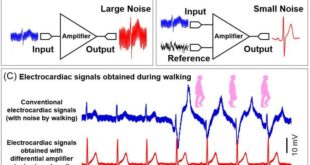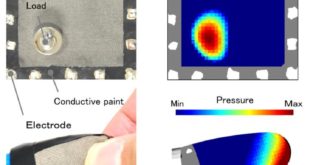Interconnected healthcare and many other future applications will require internet connectivity between billions of sensors. The devices that will enable these applications must be small, flexible, reliable, and environmentally sustainable. Researchers must develop new tools beyond batteries to power these devices, because continually replacing batteries is difficult and expensive. In …
Read More »Making sense of flexible sensor systems
A team of researchers from Osaka University and Leibniz Institute for Solid State and Materials Research developed the world’s thinnest and lightest magnetic sensor matrix sheet system that visualises the two-dimensional distribution of magnetism on various surfaces. Conventional magnetic sensor circuits consist of silicon-based hard electronic elements integrated on a …
Read More »World’s thinnest, lightest signal amplifier enables bioinstrumentation with reduced noise
Conventionally, bioinstrumentation circuits for health care and medical use have consisted of hard electronic devices, such as silicon transistors. However, when soft biological tissues, such as skin, come into contact with hard electronic devices, they tend to become inflamed. Therefore, monitoring of biosignals in everyday life over a long period …
Read More »Multi-hop communication: Frog choruses inspire wireless sensor networks
If you have ever camped by a pond, you know frogs make a racket at night; but what you might not know is how functional and regulated their choruses really are. Frogs communicate with sound, and amid their ruckus is an internally orchestrated system that lets information get through more …
Read More »Feeling the pressure with universal tactile imaging
Touch, or tactile sensing, is fundamentally important for a range of real-life applications, from robotics to surgical medicine to sports science. Tactile sensors are modeled on the biological sense of touch and can help researchers to understand human perception and motion. Researchers from Osaka University have now developed a new …
Read More » Instrumentation Monthly Test | Measurement | Control
Instrumentation Monthly Test | Measurement | Control




